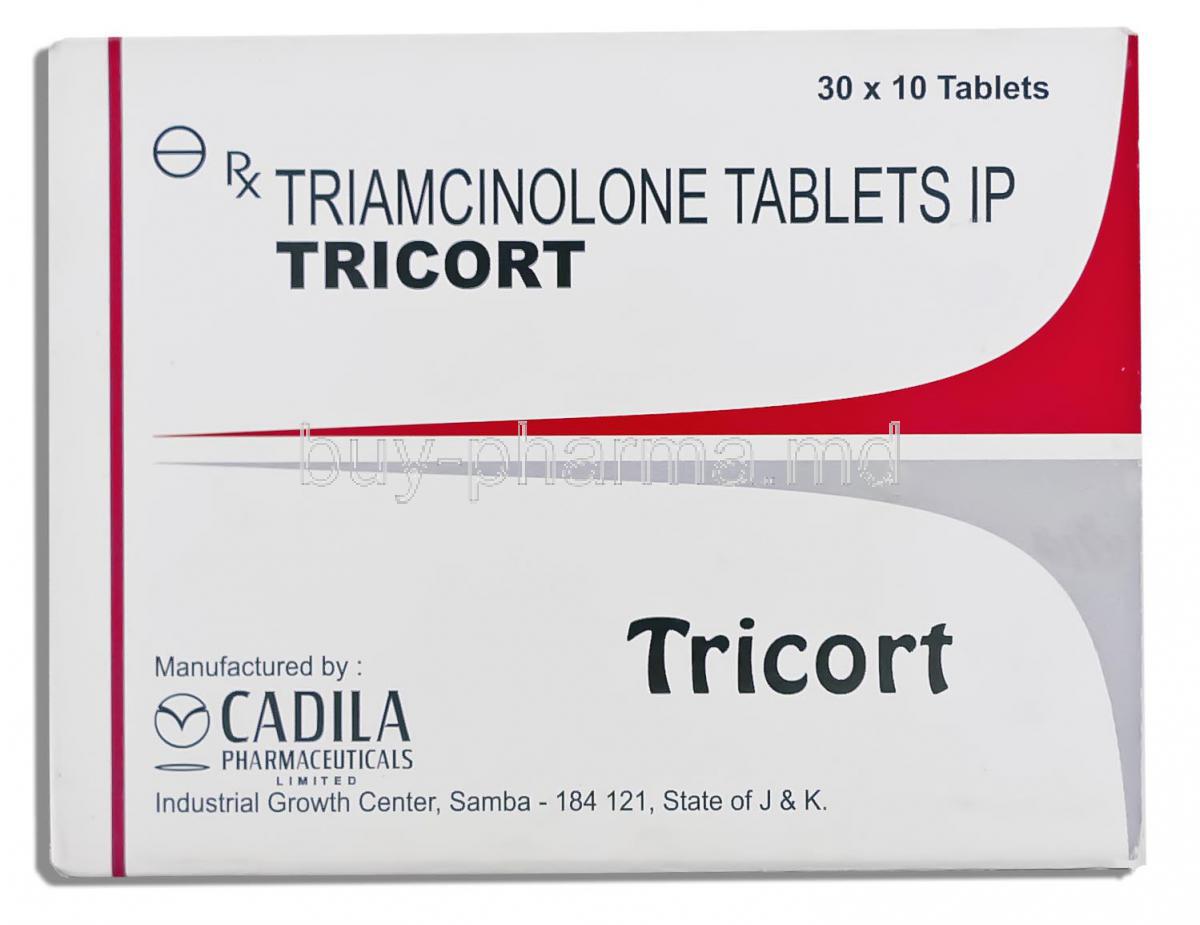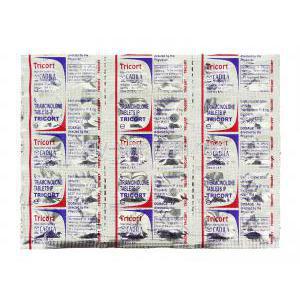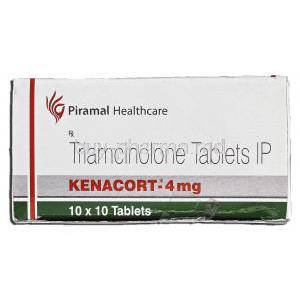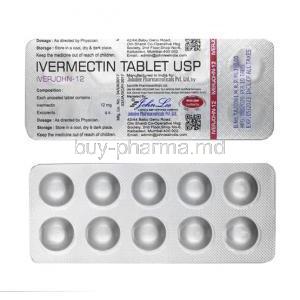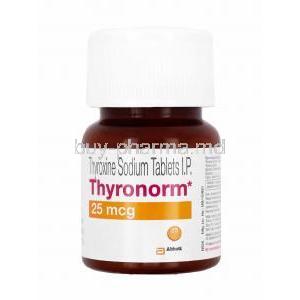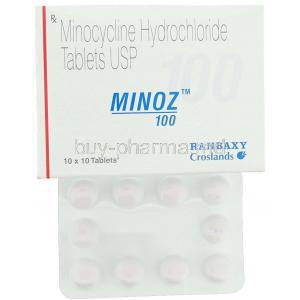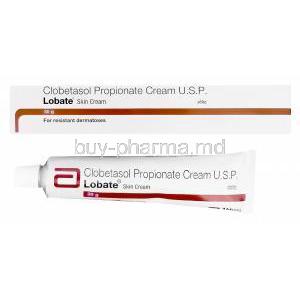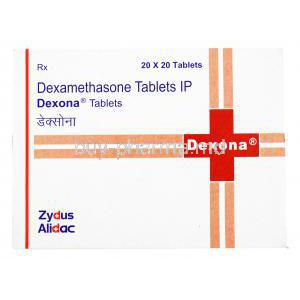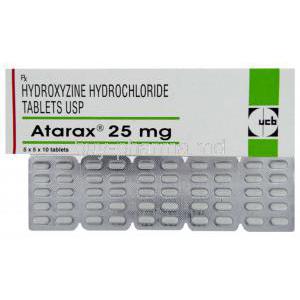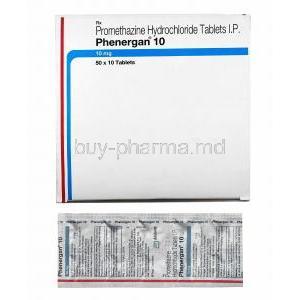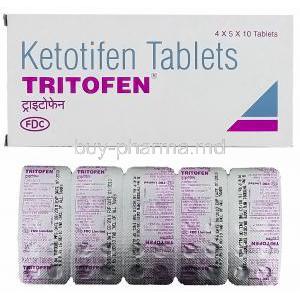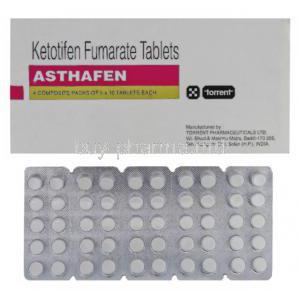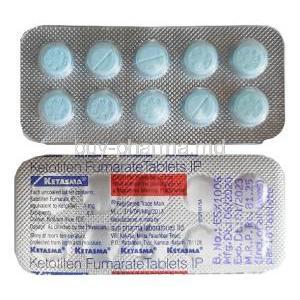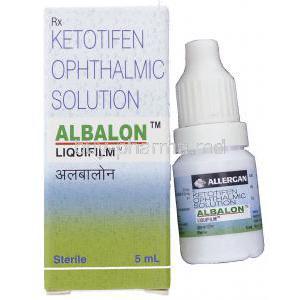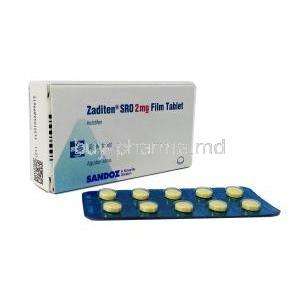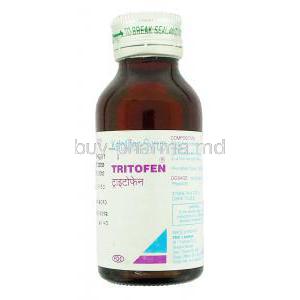Before getting Triamcinolone, it is essential to make an informed decision based on a thorough understanding of the medication's properties and potential side effects. This article will provide detailed information on Triamcinolone so patients can decide about potential risks and side effects with their healthcare provider.
In the following, we will look into the details of Triamcinolone, such as how they act within the body and its applications in various medical conditions. Furthermore, we will explore these medications' potential risks and side effects while examining any interactions or contraindications that may arise when combined with other treatments.
Lastly, as you decide whether to buy Triamcinolone or seek alternative therapies, we will discuss dosage recommendations and proper drug administration techniques for optimal results.
Table Of Contents: Buy Triamcinolone
- The Importance of Making an Informed Choice about Medication
- What is Triamcinolone?
- How Does Triamcinolone Work?
- Practical Uses of Triamcinolone
- Risks and Side Effects
- Interactions and Contraindications
- Weighing the Pros and Cons of Triamcinolone
- Triamcinolone vs. Other Steroids
- Dosage and Administration
- Buy Triamcinolone
The Importance of Making an Informed Choice about Medication
When managing your health, making informed decisions about your medications is crucial. This includes understanding a drug's composition, uses, and potential side effects before incorporating it into your treatment plan. One medication doctors may prescribe for various conditions is Triamcinolone, a synthetic glucocorticoid steroid with anti-inflammatory properties.
This section will briefly overview Triamcinolone and discuss its different types - including triamcinolone acetonide and hexacetonide. We'll also delve into how this medication works within the human body, both in short-term and long-term scenarios. Additionally, we'll explore practical uses for Triamcinolone in treating common medical conditions and some unusual yet practical applications.
- Type: Synthetic glucocorticoid steroid
- Primary Uses: Anti-inflammatory purposes; used to treat various skin disorders like eczema or psoriasis.
- Potential Side Effects: Skin irritation at the injection site (for injectable forms), increased appetite leading to weight gain (if taken orally).
- Dosage Forms: Creams, ointments, injections & oral tablets/pills depending on doctor-prescribed needs based on the patient's condition.
As with any medication, weighing the pros and cons of using Triamcinolone is essential. This includes understanding potential side effects, drug interactions, and contraindications before beginning treatment. We'll also compare Triamcinolone to other steroids on the market, highlighting its benefits over alternative options and situations where another steroid may be better for your specific needs.
Lastly, we will discuss proper dosage and administration techniques for Triamcinolone. Determining the correct dosage is crucial in ensuring this medication's safe and effective use while minimizing potential side effects or complications from improper drug administration.
By giving a comprehensive overview of Triamcinolone, we hope to equip you with the knowledge needed to make an informed decision regarding this medication. Stay tuned for more detailed discussions on each aspect mentioned above.
Before incorporating Triamcinolone into your treatment plan, it is crucial to understand its composition, uses, and potential side effects. This synthetic glucocorticoid steroid has anti-inflammatory properties and can be used for various skin disorders such as eczema or psoriasis. It's essential to weigh the pros and cons of using this medication, including understanding potential side effects, drug interactions, and contraindications before beginning treatment.
What is Triamcinolone?
Triamcinolone is a synthetic corticosteroid medication that treats various inflammatory and allergic conditions. It belongs to the class of drugs known as glucocorticoids, hormones that help regulate inflammation, immune response, and metabolism in the body.
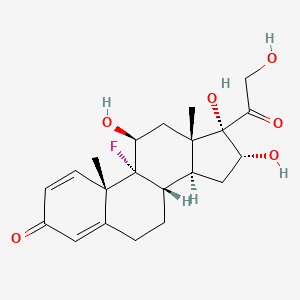
The composition of Triamcinolone includes a steroid nucleus with different chemical groups attached, giving it unique properties compared to other steroids. There are several types of Triamcinolone available for various applications:
- Triamcinolone acetonide is an injectable or topical treatment for skin conditions such as eczema, psoriasis, and dermatitis.
- Triamcinolone hexacetonide: Mainly used as an intra-articular injection for joint inflammation caused by arthritis or injury.
- Nasal spray (Nasacort): Used to relieve symptoms associated with seasonal allergies like hay fever.
- Dental paste (Kenalog Orabase): Applied directly on oral ulcers or lesions for pain relief and faster healing.
Triamcinolone can also be found with other medications, such as antibiotics or antifungal agents, to treat inflammation-related infections. These combinations can help treat conditions accompanied by inflammation. For example, nystatin-triamcinolone cream combines an antifungal drug (nystatin) with Triamcinolone to treat fungal skin infections.
Choosing the type of Triamcinolone based on your specific medical condition is essential, and consult a healthcare professional for proper guidance. Understanding the composition and styles of this medication will help you make an informed decision about its use in managing inflammation and allergies effectively.
How Does Triamcinolone Work?
By understanding how it works in the short and long term, one can gain insight into Triamcinolone's role in reducing inflammation, itching, redness, and other symptoms of skin conditions. Triamcinolone, a corticosteroid, reduces inflammation and other signs of skin conditions.
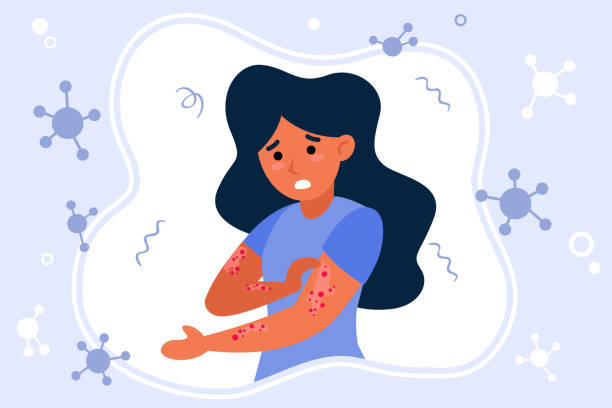
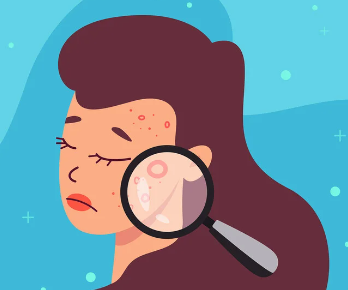
The Science Behind Triamcinolone
Triamcinolone belongs to a class of drugs called corticosteroids, synthetic versions of hormones produced naturally by our adrenal glands. These hormones help regulate our immune system's response to inflammation. Triamcinolone mimics these natural hormones and reduces inflammatory responses when applied topically or injected into affected areas.
Short-Term Impact on the Human Body
- Reduced Inflammation: By suppressing the release of chemicals that cause inflammation (such as prostaglandins), Triamcinolone helps reduce swelling, redness, and pain at the site of application or injection.
- Easing Itchiness: The anti-inflammatory properties of this medication also help alleviate itchiness caused by skin irritations such as eczema or psoriasis.
- Faster Healing: By controlling excessive immune responses that may hinder healing processes for certain conditions like dermatitis or insect bites, patients often experience shorter recovery times when using triamcinolone-based treatments.
Long-Term Impact on the Human Body
Triamcinolone is usually prescribed for short-term relief, but some patients may need long-term treatment to manage chronic conditions. However, some patients may require long-term use to work with chronic skin disorders or other health issues. When used over an extended period, it's essential to be aware of the potential side effects and risks associated with prolonged corticosteroid use:
- Adrenal Suppression: Long-term use can lead to a decrease in natural hormone production by the adrenal glands. This condition, known as adrenal suppression, may cause fatigue, weakness, and difficulty responding to stress.
- Skin Thinning: Prolonged application of topical corticosteroids like Triamcinolone can result in skin thinning (atrophy), making it more susceptible to bruising and tearing.
- Infections: Since corticosteroids suppress immune responses, long-term usage increases susceptibility to infections due to a weakened immune system.
It's important to note that Triamcinolone should only be used as directed by a doctor. Improper drug administration or misuse can lead to adverse side effects. If you experience any side effects or are concerned about Triamcinolone, consult your healthcare provider.
Triamcinolone is a corticosteroid that reduces inflammation, itching, and redness associated with various skin conditions. It mimics the natural hormones our adrenal glands produce to regulate the immune system's response to inflammation. However, long-term use can lead to potential side effects such as adrenal suppression, skin thinning, and increased infection susceptibility.
Practical Uses of Triamcinolone
Taking a closer look at the practical applications of Triamcinolone, we can identify common medical conditions treated by this medication and some unusual yet practical uses that may surprise you.
Common Medical Conditions Treated by Triamcinolone
- Dermatological issues: As a synthetic glucocorticoid, Triamcinolone is often prescribed to treat various skin disorders such as eczema, psoriasis, and dermatitis. It helps reduce inflammation, itching, and redness associated with these conditions.
- Joint pain relief: Injections of triamcinolone acetonide into affected joints can relieve pain caused by arthritis or other joint-related problems. The side effects are minimal, and the anti-inflammatory properties help reduce swelling and improve patient mobility.
- Allergic reactions: For those suffering from severe allergies like hay fever or asthma attacks, Triamcinolone's nasal spray form offers quick relief by reducing inflammation in the nasal passages.
Unusual Yet Effective Uses of This Medication
Beyond its more common uses mentioned above, several lesser-known applications for Triamcinolone have proven to be quite effective:
- Mouth ulcers: Triamcinolone hexacetonide as an oral paste can be applied directly to mouth sores, relieving pain and inflammation.
- Hair loss treatment: In some cases, triamcinolone injections have been used to treat alopecia areata, which causes hair loss in small patches on the scalp. The steroid helps reduce inflammation around hair follicles and stimulates regrowth.
Triamcinolone may offer a promising solution for those suffering from alopecia areata, as it has the potential to reduce inflammation and promote hair regrowth; however, always consult your healthcare provider before starting any new treatment. As with any medication, always consult your doctor before starting a new drug administration.
Risks and Side Effects
When considering Triamcinolone, knowing its potential risks and side effects is essential. While many patients experience relief from their symptoms, some may encounter adverse reactions that require medical attention.
Common Side Effects of Triamcinolone
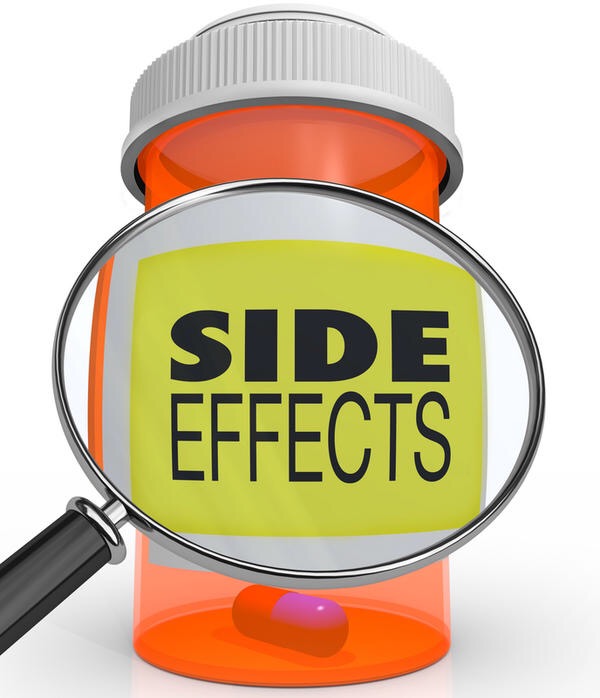
The most common side effects experienced by patients using Triamcinolone include the following:
- Burning or itching at the application site
- Dryness or peeling skin
- Rash or irritation around the mouth (perioral dermatitis)
- Skin discoloration (hypopigmentation)
- Folliculitis (inflammation of hair follicles)
Although usually mild, these side effects may require medical attention if they persist or worsen. However, if they continue or worsen, it is crucial to consult a healthcare professional for further evaluation.
Potential Risks and Precautions

Specific individuals may be more susceptible to experiencing severe side effects when using Triamcinolone. These can include:
- Skin thinning or atrophy: This occurs when long-term use leads to a weakening of skin tissue.
- Stretch marks
- Acneiform eruptions
- Hypertrichosis (excessive hair growth)
- Secondary infections due to immunosuppression caused by prolonged steroid use
- Prolonged use of high-dose topical steroids may cause suppression of the HPA axis, leading to severe side effects such as fatigue, weight loss, and low blood pressure. Symptoms such as fatigue, weight loss, and low blood pressure may result from prolonged steroid use, which can lead to HPA axis suppression.
It is critical for those with existing medical conditions or taking other medications to talk about potential hazards and contraindications with their healthcare provider before utilizing Triamcinolone. Pregnant or breastfeeding women should consult their doctor before using this medication due to possible adverse effects on the developing fetus or nursing infant.
In conclusion, understanding Triamcinolone's potential risks and side effects is crucial in making an informed decision about its use. By being aware of the potential risks and discussing them with a medical practitioner, people can ensure they get proper care while reducing undesired effects.
Before buying Triamcinolone, knowing this medication's potential risks and side effects is essential. Common side effects include burning or itching at the application site, dryness or peeling skin, rash or irritation around the mouth (perioral dermatitis), skin discoloration (hypopigmentation), and folliculitis (inflammation of hair follicles). Specific individuals may be more susceptible to experiencing severe side effects when using Triamcinolone, such as skin thinning or atrophy, stretch marks, acneiform eruptions, hypertrichosis (excessive hair growth), secondary infections due to immunosuppression caused by prolonged steroid use and hypothalamic-pituitary-adrenal (HPA) axis suppression.
Interactions and Contraindications
This section will explore everyday drug interactions with other medications and discuss situations in which Triamcinolone should not be used.
Potential Drug Interactions
Taking Triamcinolone alongside certain medications can increase the risk of side effects or reduce effectiveness. Some examples of drugs that may interact with Triamcinolone include:
- Albuterol sulfate inhalers may increase the risk of heart-related side effects.
- Warfarin: Combining these two medications can enhance the anticoagulant effect, increasing bleeding risks.
- CYP3A4 inhibitors, such as ketoconazole: These drugs can slow down the metabolism of Triamcinolone, leading to increased levels in your body and potentially causing more severe side effects.
- Diabetes medications: Steroids like Triamcinolone can raise blood sugar levels; thus, dosages for diabetes medicine might need adjustment when taken concurrently.
This list is not exhaustive; always consult your healthcare provider before starting any new medication using Triamcinolone to avoid possible complications from drug interactions.
Contraindications for Triamcinolone Use
In certain situations, Triamcinolone is not recommended due to potential risks. Some contraindications include:
- Allergy or hypersensitivity: It should be avoided if you have a known allergy to Triamcinolone or any component in its formulation.
- Systemic fungal infections: Patients with active systemic fungal infections should not use Triamcinolone as it may worsen the condition.
- Live vaccines: The administration of live vaccines is generally contraindicated in patients receiving immunosuppressive doses of corticosteroids like Triamcinolone, as they can weaken your immune system and increase the risk of infection from the vaccine itself.
If pregnant or breastfeeding, speak with a healthcare provider before using Triamcinolone. When pregnant or breastfeeding, it is wise to be cautious when using Triamcinolone; no studies thoroughly examine its effects in these populations.
Being aware of potential drug interactions and contraindications is essential when using Triamcinolone. Some medications that may interact with Triamcinolone include albuterol sulfate inhalers, warfarin, CYP3A4 inhibitors like ketoconazole, and diabetes medications. Additionally, patients with allergies or hypersensitivity to Triamcinolone or any component in its formulation should avoid this medication.
Weighing the Pros and Cons of Triamcinolone
Triamcinolone is a synthetic glucocorticoid that doctors commonly prescribe to treat various medical conditions. However, like any medication, it has its pros and cons that patients should be aware of before taking it.
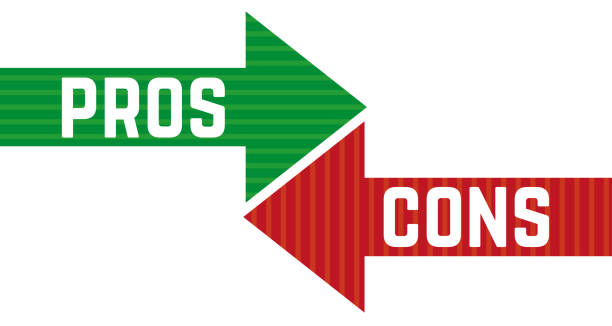
The Pros of Triamcinolone
- Effective in treating inflammation: Triamcinolone reduces inflammation in the body, making it an effective treatment for conditions such as arthritis and asthma.
- Versatile: Different types of Triamcinolone are available (such as triamcinolone acetonide and triamcinolone hexacetonide), which can be administered via injection or topical application, depending on the treated condition.
- Rapid relief: Triamcinolone can relieve symptoms such as pain and swelling.
The Cons of Triamcinolone
- Potential side effects: Like all medications, Triamcinolone has possible side effects. These may include weight gain, mood changes, high blood pressure, and increased risk of infection, among others. It's important to discuss these risks with your doctor before starting treatment.
- Risk for long-term use: Prolonged use of steroids like Triamcinolone may lead to serious health problems, including osteoporosis (bone loss), muscle weakness or wasting away (atrophy), and glaucoma (cataracts). This risk increases if you take higher doses over extended periods than your doctor recommends.
- Interactions and contraindications: Triamcinolone may interact with other medications or supplements, so you must inform your healthcare provider of all the drugs you use. It is also not recommended for use in certain medical conditions such as fungal infections, tuberculosis, and viral infections.
In conclusion, Triamcinolone can be an effective treatment option for various medical conditions when used correctly under the guidance of a healthcare professional. However, patients should weigh its pros and cons before deciding if it is right for them.
Sources:
Triamcinolone vs. Other Steroids
When it comes to treating medical conditions, steroids are often prescribed by doctors. However, not all steroids are created equal. Triamcinolone is a synthetic glucocorticoid with several benefits over other types of steroids.
Benefits of Triamcinolone Over Other Steroids
- Potency: Triamcinolone is more potent than other commonly used corticosteroids like hydrocortisone and prednisone.
- Dosing frequency: Triamcinolone can be given less frequently than other corticosteroids requiring more frequent dosing due to its potency.
- Affordability: Compared to newer drugs on the market, Triamcinolone is relatively affordable and accessible for patients who need it.
When Other Steroids May Be a Better Choice
Another type of steroid may be better depending on the patient's condition or needs. For example:
- Clobetasol propionate may be preferred for skin conditions due to its high potency and effectiveness in reducing inflammation and itching in affected areas.
- Betamethasone dipropionate might be recommended for respiratory issues such as asthma because it works quickly and effectively to open airways in the lungs, unlike Triamcinolone's slower onset time.
For more information on the potency of Triamcinolone compared to other corticosteroids, check out this article by the National Center for Biotechnology Information.
If you're curious about other types of steroids and their uses, visit Drugs.com's corticosteroid page.
Dosage and Administration
Determining the correct dosage of Triamcinolone is crucial for ensuring safe and effective treatment. This section will provide you with valuable tips on how to administer this medication properly.
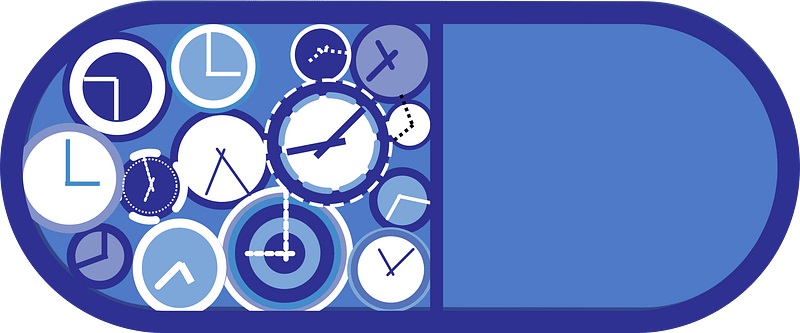
Determining the Correct Dosage
The dosage of Triamcinolone should be determined by factors such as the patient's age, weight, the medical condition being treated, and overall health status. It is essential to consult your healthcare provider before starting any new medication, including Triamcinolone. Your doctor will evaluate your specific situation and prescribe a suitable dose accordingly.
- Creams or ointments: For skin conditions like eczema or psoriasis, apply a thin layer of Triamcinolone cream or ointment to the affected area(s) as directed by your physician.
- Nasal spray: For allergic rhinitis symptoms (hay fever), use one or two sprays in each nostril once daily as your doctor prescribes.
- Injections: In cases where oral medications are ineffective, doctors may recommend injections directly into joints (intra-articular) or soft tissues (intramuscular). The frequency and dosage depend on individual circumstances; follow your healthcare provider's instructions closely.
Tips for Safe and Effective Administration
To ensure that you get the most out of your Triamcinolone treatment while minimizing potential side effects, consider these helpful tips:
- Familiarize yourself with proper application techniques: Whether applying a topical cream/ointment or using a nasal spray/inhaler, ensure you understand how to use the medication correctly. Ask your pharmacist or healthcare provider for guidance if needed.
- Follow your doctor's instructions: Do not alter the prescribed dosage or frequency without consulting your physician first. Changing the prescribed dosage or frequency without consulting your physician may reduce efficacy and a greater risk of side effects.
- Monitor progress and side effects: Keep track of any improvements in symptoms and potential adverse reactions while using Triamcinolone. Report any concerns to your healthcare provider promptly.
- Avoid prolonged use: Long-term synthetic glucocorticoids like Triamcinolone can cause serious side effects such as skin thinning and adrenal suppression. Use this medication only for the duration recommended by your doctor.
Incorporating certain precautions into your treatment plan may help maximize the advantages of Triamcinolone while limiting any potential dangers related to its usage. Contact your doctor immediately if you experience side effects, such as Triamcinolone.
To ensure safe and effective treatment, it is crucial to determine the correct dosage of Triamcinolone based on various factors such as age, weight, medical condition being treated, and overall health status. Proper application techniques should be followed while monitoring progress and side effects to minimize potential risks associated with its use.
Buy Triamcinolone
Triamcinolone is a steroid medication that reduces inflammation and suppresses the immune system. Triamcinolone is a steroid medication that can be used to treat allergies, arthritis, and skin disorders.
However, you must be aware of this medication's risks, side effects, and any interactions or contraindications with other medications you may be taking. There are also alternative treatments available that may be more suitable for your individual needs.
If you're pondering obtaining Triamcinolone, you must first converse with your healthcare specialist and weigh all the choices. Buy-pharma.md offers affordable prices on various medications, including Triamcinolone - visit their website today to learn more!

